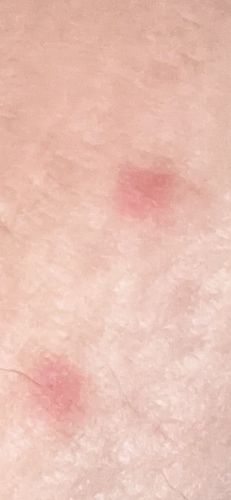Flea (bite)
Scientific Name: Siphonaptera (order), e.g., Ctenocephalides felis (cat flea)
Order & Family: Siphonaptera, various families (e.g., Pulicidae)
Size: Adult fleas are typically 1.5 to 3.3 mm (0.06 to 0.13 inches) long.

Natural Habitat
Fleas typically live on the bodies of warm-blooded animals, including pets (dogs, cats), rodents, and sometimes humans. They are also found in bedding, carpets, cracks in floors, and pet resting areas.
Diet & Feeding
Adult fleas are external parasites that feed exclusively on the blood of their hosts. Larvae feed on organic debris, including adult flea feces.
Behavior Patterns
Fleas are excellent jumpers, allowing them to easily transfer from host to host or from the environment to a host. They bite quickly and can cause multiple bites in a close proximity, forming clusters or lines. They have a complete metamorphosis (egg, larva, pupa, adult). Adults can live for several weeks to months, continuously feeding and laying eggs.
Risks & Benefits
Risks: Flea bites cause itchy, red welts, discomfort, and can lead to secondary skin infections from scratching. Some individuals may develop allergic reactions (flea allergy dermatitis). Fleas can transmit diseases such as murine typhus and plague (though rare in many developed countries), and act as intermediate hosts for tapeworms (e.g., Dipylidium caninum). Benefits: In most contexts, fleas offer little direct benefit to humans or ecosystems, though they are a food source for some predators.
Identified on: 9/4/2025